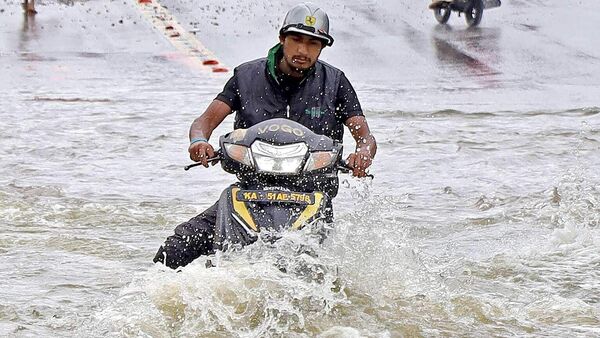A few hours of rain in Bengaluru earlier this week led to severe flooding in key corridors of the city, leaving citizens worried about what will happen once the monsoon arrives later this month. A week of rain last September – which saw the infrastructure of India’s startup capital crumble and turned people’s lives upside down – are still fresh in the memory. In a report titled ‘Bengaluru Urban Flood’, released on 31 May, property advisory Knight Frank India proposed solutions that could prevent a recurrence of this nightmare.
Stormwater drains need an overhaul
In its report, Knight Frank suggested that Bengauru needs a master plan for stormwater drainage (SWD) and alternative flood control techniques. It said the city needs to construct about 658 km of drains. It also needs to repair and revamp about 840 km of existing primary stormwater drains.
The estimated capital expenditure for this would be around ₹2,800 crore, it said. This includes building additional 658 km of drains at a cost of ₹2 crore to ₹2.50 crore per km, cleaning and repairing existing drains for about ₹65 lakh to ₹67 lakh per km, and another ₹300 crore to ₹400 crore to improve the condition of the city’s lakes and for maintenance.
In the city’s SWD system, interconnected primary and secondary drains help to transfer excess rainwater from one lake to the other. However, the increase in construction has hampered this interconnectivity between lakes, shrinking the length of the drains.
“The civic body’s (Bruhat Bengaluru Mahanagar Palike) storm drainage improvement program has a budget of ₹3,000 crore. The need of the hour is to address the stormwater drainage problem in a comprehensive manner. Clearly, [the problem] has been the lack of capacity and willpower within the government to implement this in a focused manner. The entire planning and implementation should take about three years, and it needs to be done by a professional engineering consulting firm. We have also suggested value-capture financing to incentivise the government and other stakeholders,” said Rajeev Vijay, executive director, government and infrastructure advisory, Knight Frank India.
Value-capture financing
When the government makes an investment in infrastructure, there is typically value accretion in adjoining plots of parcels, among other benefits. According to Knight Frank, the government can then say that if the infrastructure is better because of public investment, and property values increase as a result, it wishes to claim some of this value from the beneficiaries.
The VCF route can have different instruments, such as a fee for changing land use, a land-value tax, a betterment levy, a development charge, transfer of development rights, premium on relaxation of floor space index and floor area ratio, vacant-land tax, tax increment financing, and zoning relaxation for land acquisition.
Impact on real estate
Due to a huge influx of people, the share of the built-up area of Bengaluru increased from 37.4% in 2002 to 93.3% in 2020. As a result of rapid and unplanned development, the city’s infrastructure has come under severe stress.
The real estate sector has had a significant multiplier effect on Bengaluru’s economy. The city’s real estate development comprises about 213 million sq ft of Grade A office space, which has generated nearly 1.7 million white-collar jobs since 2008, predominantly in the IT/ITES sector, Knight Frank says.
However, last year’s flooding underlined the unholy nexus between land aggregators, the government and property developers. Builders and IT firms have been accused of building on top of SWDs and buffer zones, due to which the primary and secondary drains of the rajakaluves have been diverted or encroached upon. Rajakaluves or canals allow rainwater to flow into SWDs. Clearly, what Bengaluru needs is rational real estate development that doesn’t further damage the city’s ecosystem and infrastructure.
What are other possible solutions?
Knight Frank has also recommended that Bengaluru adopt nature-based solutions such as ‘sponge city’ developments. ‘Sponge city’ is a new urban construction model for flood management that is being implemented in China, to strengthen ecological and drainage systems. It looks at tackling surface-water flooding and similar urban water-management issues, including urban runoff, water conservation and attenuation of peak run-off.
Download The Mint News App to get Daily Market Updates.
More
Less
Updated: 01 Jun 2023, 04:11 PM IST
#Mint #Explainer #big #investment #Bengaluru #fix #plumbing
